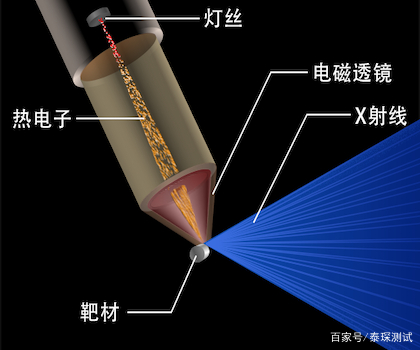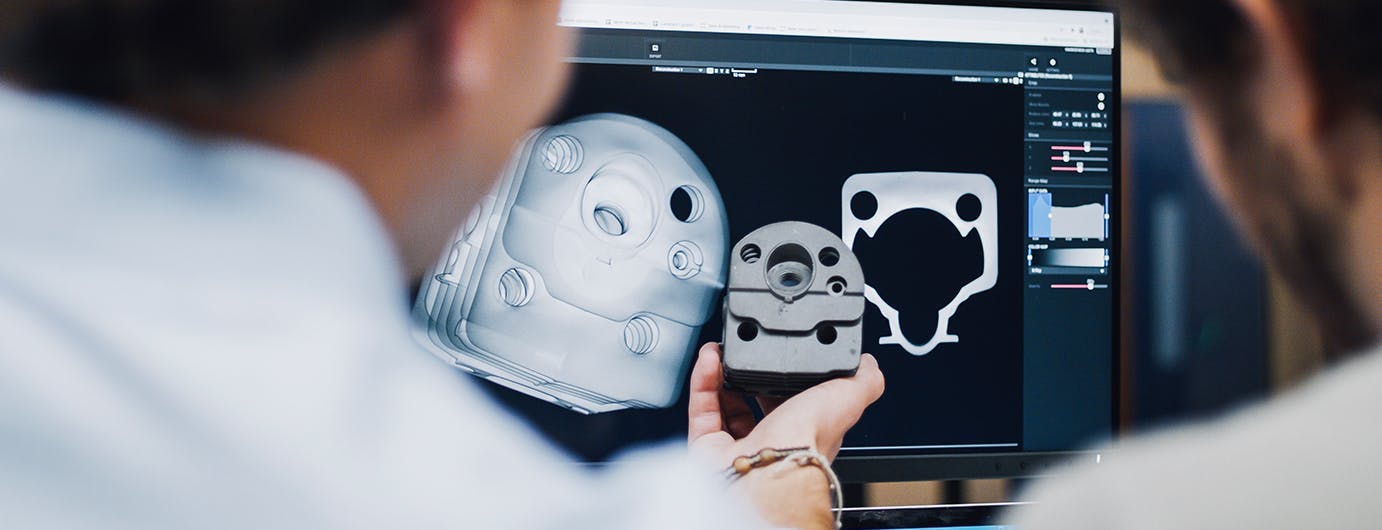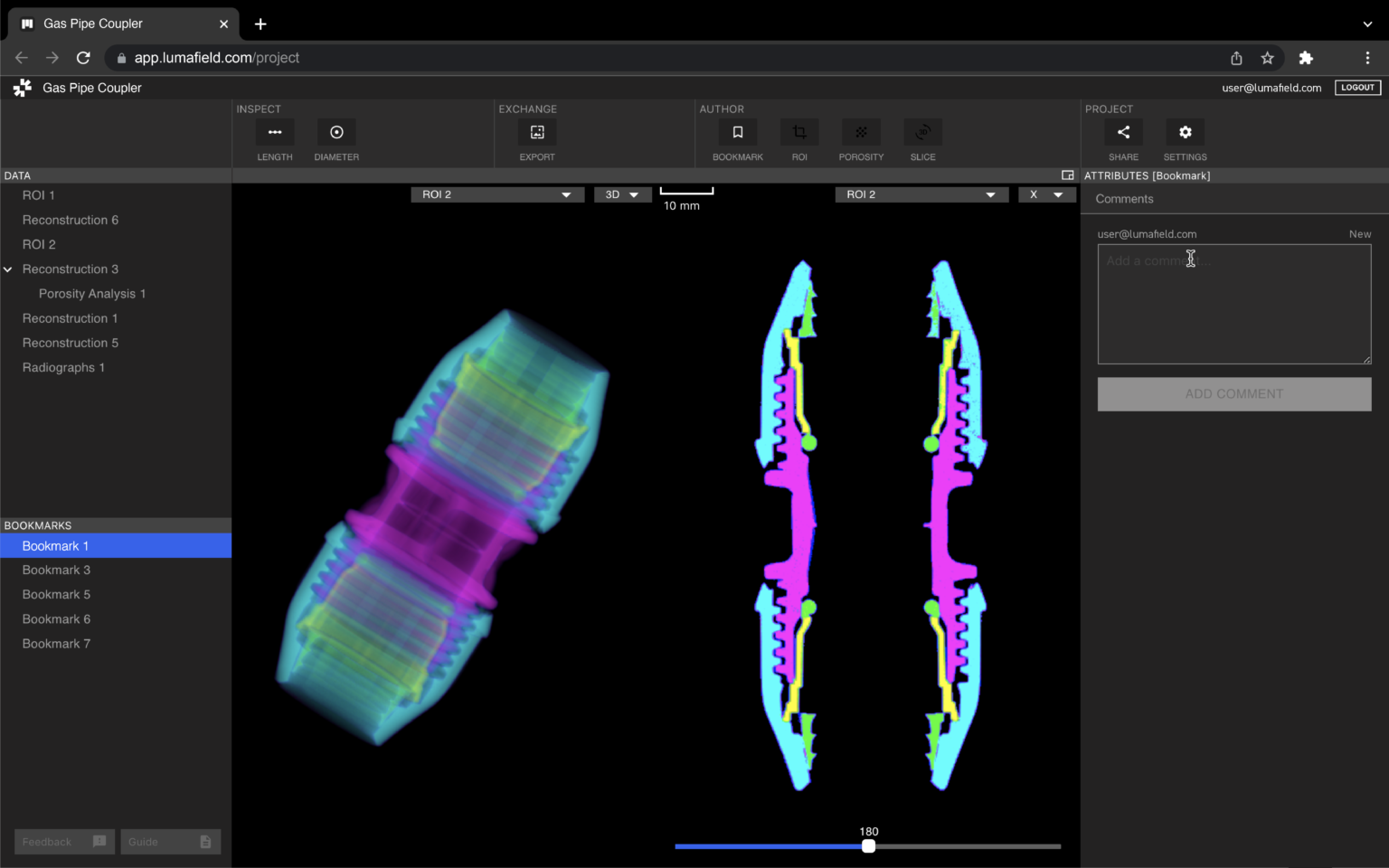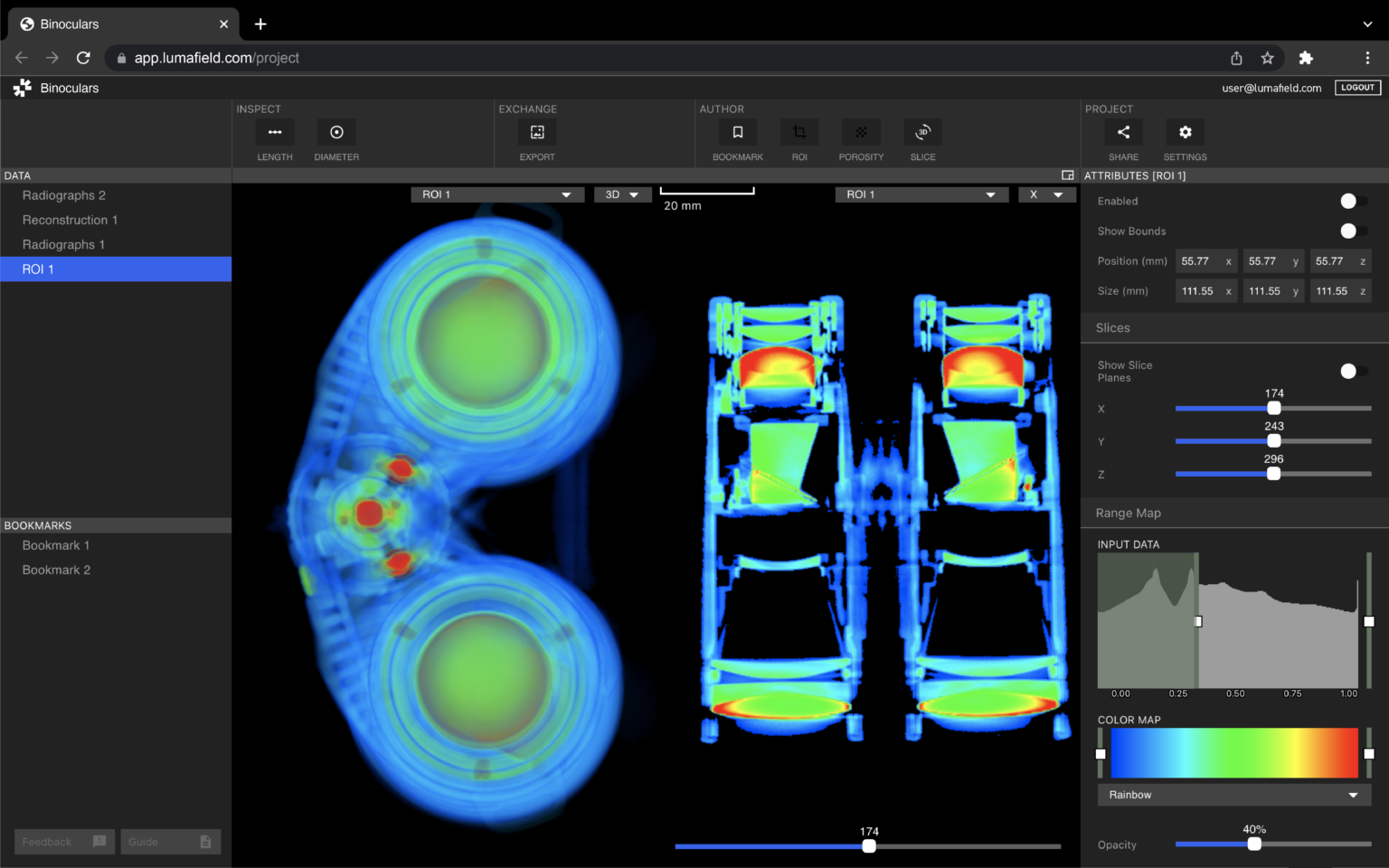Guide:When it comes to computed tomography (CT), most people think of taking CT films in a hospital.In fact, in the industrial field, CT also has many uses, such as metal detection3D printingThe internal quality of the parts, but such equipment is generally more expensive, and the cost of one inspection is also high. If a company can rent CT equipment at a lower price, what changes will it bring to the market?
On April 18, 2022, Lumafield, a computer tomography (CT) research startup, announced that it has secured over $32 million in funding from Kleiner Perkins, DCVC, Tony Fadell, Jason Calacanis’ Launch and Lux.invest. Currently, CT tools are very expensive, but Lumafield will rent out kits to users for $3,000 a month. These CT kits are said to be operable in an office environment and easy to use.
Lumafield’s platform combinessoftware,3D scanningand CT, enabling engineers to map and understand the internal features of a product in a hassle-free manner. Using Voyager software, parts will also be segmented by automatically combining CT interpretations.
Industrial CT and its application fields
Industrial CT is the abbreviation of industrial computed tomography technology. It can clearly, accurately and intuitively display the internal structure and composition of the detected object in the form of two-dimensional tomographic or three-dimensional images without damage to the detected object. , material and defect status, known as the best non-destructive testing and non-destructive evaluation technology. Industrial CT technology involves nuclear physics, microelectronics, optoelectronic technology, instrumentation, precision machinery and control, computer image processing and pattern recognition and other multidisciplinary fields. It is a technology-intensive high-tech product.

Industrial CT is widely used incarmaterials, railways,aerospace,aviation,Military industrynational defense and other industrial fields, for the successful launch of space launch vehicles, spacecraft and space vehicles, the development of aero-engines, the inspection and testing of large-scale weapon systems, geological structure analysis, railway vehicle speed-up and heavy-load safety, oil reserves prediction, mechanical product quality determination important technical means provided.
What is industrial CT generally used for?
●Wall thickness analysis
Wall thickness analysis can be easily used for dataset processing, followed by CT data/voxel datasets to automatically locate areas of insufficient area or walls, over-thickness and over-gap locations, calculate wall thickness or gap size with color coding Display the analysis results.
●Defect detection
Defect detection automates the detection of discontinuities such as pores, holes, and inclusions. CT-based defect analysis is widely used today, such as castings, plastic parts and BGAs. The detected defects can be color-coded and visualized according to the quantity, and the parameters of each defect, such as location, compactness, size, shape, coordinates, etc., can be calculated to facilitate the analysis of product defects.
●Apply to engineering
Even for complex assemblies, 3D images of each individual part can be easily obtained after CT scanning and outputting 3D data to VGStudio MAX software.
●CAD comparison
Compare CT/voxel data directly to CAD or other CT/voxel data, more efficiently than conventional methods, with color-coded display of analysis results.
●Analysis of fiber composite materials
Different fiber orientations can be marked for analysis of the entire object or a user-specified “region of interest” and the analysis results displayed in a histogram.
● Metrology/three-coordinate measurement
CMM includes all 2D and 3D measurement functions, such as geometric dimensions and tolerances (DIN EN I0S 1101standard).
●Transfer phenomenon
Perform microstructure-level virtual flow and diffusion experiments directly on CT scan data of porous and multi-component materials without the need for meshes to calculate homogeneous material properties such as absolute permeability, tortuosity, formation factor, molecular diffusion coefficient, electrical resistance It is also possible to calculate tensor-valued material properties for anisotropic samples.
●Structural mechanics simulation
Calculates the mechanical stress distribution within an object (CT volume data object, mesh object, etc.), performs virtual force tests using meshless finite element methods, linear basis functions and conjugate gradient solvers to help you evaluate discontinuities The effect of stability on part stability.
After analysis, there is also a powerful export function, which can export image text in various formats (CSV/HTML/RTF, etc.).
Lumafield’s technology and business model
Tony Fadell, co-inventor of the iPod and iPhone, said: “When we developed the iPod and iPhone, we needed to rely on X-rays for CT scans. At the time, we had to use external services to get these expensive scans, And wait a few days for results. Even now, this critical tool is only available to giant companies. But that will change quickly, and Lumafield puts these powerful tools on the benches of engineers around the world.”
In addition, Lumafield’s “powerful automated analysis engine can pinpoint voids, pores and cracks before they become critical issues”.According to reports, the metal3D printingRepresentative business desktop metal in the fieldDesktop Metalalready a user.
Only with CT can you really be sureMetal 3D PrintingThe parts do not have any voids or cracks. It would be very valuable to be able to CT scan every part printed by the service provider in a cost-effective manner. As a result, it will be possible to better deal with quality assurance issues, and CT flaw detection will be possible even for non-critical components.

By now, offering CT testing is beyond the capabilities of most providers. Lumafield’s products and models have the potential to change that, making CT inspections available to small businesses and more parts. With Lumafield, more parts can be inspected more cheaply.

Every part made by a servicer is different, with different orientations, tool paths and residual heat, all in different areas of the build platform, so individual quality assurance is required for every 3D printed part made.Therefore, every part produced should be3D scanningand CT scans. While this will be expensive, each part is unique.
So far, in addition to aerospace, defense andmedicalOutside the market, this is unaffordable in terms of cost. However, with the automated Lumafield software package, this could become a reality.
(responsible editor: admin)


0 Comments for “$3000/month to rent out industrial CT inspection 3D printed parts, Lumafield gets $32 million investment”